Metalheads tend to be wary of punk, recognizing it only for its role as an influence on metal. This attitude obscures the fact that the best of punk is worth exploring on its own terms and merits, starting with perhaps the greatest influence of punk technique and heightened aesthetics in that genre, hardcore punk‘s The Misfits.
While there is a stubborn tradition of hostility between metal and punk fans, owing in part to the class divide imposed by the social justice politics of later punk, many metalheads acknowledge the interweaving of hardcore punk with the genetics of metal from speed metal to later transformations into death and black metal.
Musicians appreciated these shared influences and used them to produce classics like Overkill, Show No Mercy and Morbid Tales on the metal side and Arise!, The Age of Quarrel and Dealing With It on the punk edge.
Exploring punk music comes with its pitfalls: the genre has become depleted over the years, so it is easy to go wrong with punk. While the ratio of mediocre metal music to the excellent has increased exponentially for some time, the decay has been running longer and harder in punk.
For this reason, the Misfits are a good place to start: their distinctive form of horror punk — an amalgamation of 1970s melodic punk rock and hardcore punk, injected with musical ideas of bygone eras like 1950s rockabilly and surf rock — seems to connect well with metalheads. The same could be said about their extra-musical aesthetics and choice of lyrical subject matter.
The Exceptional and the Rest – Three Attributes of Punk
In summaries of punk as musical and cultural phenomenon, three attributes are frequently used as main descriptors. Punk is rebellious, intense and stripped-down (in relation to other forms of rock music).
These attributes can be spotted from the beginnings in early 1970s proto-punk, through the “golden age” of mid-to-late-1970s punk rock and finally in the genre’s culmination as hardcore punk, thrash and grindcore in the 1980s. Although it’s hard to argue against this way of epitomizing the genre at large, it doesn’t capture what made the classics of the punk movement great. On the contrary, it probably tells us more about what caused the downfall of the genre.
What separates the exceptional punk bands from the rest of the mob is that while these selected few stayed true to the core values and benchmarks of punk, they also managed to transcend them.
The three attributes are enough for channeling general discontent, but it requires something more than that to make a coherent and convincing statement that holds validity over time. To reach this level of expression, the classic bands had to take steps above what others were doing. Typical punk expressions like anger, noise and a hard-edged sound are powerful tools for communication but they are not sufficient in themselves, because without a sense of purpose punk music often degenerates into adolescent neurosis directed at nothing in particular.
To add some gravity to this argument, the three above mentioned attributes are used below as categories to discuss the music of the Misfits — during their first incarnation, not the travesty of the 1990s — and how it associates with metal music.
Rebellion
Raging against a sick society has always been one of punk’s prime motivators, and consequently a key ingredient to the artistic triumphs of the genre’s classic recordings. Critique and protest are vital stepping-stones in a process of reaching insight. A negative and critical approach — even if it lacks constructive solutions -– can function as a creative form of falsification. However, it needs to be grounded in some sort of idea, otherwise the critique rapidly develops into a passive form of complaint. But in cases where punk bands seem to have it all “figured out” in their lyrics, a too literal and outspoken ideological stance can be problematic as well.
When it comes to protesting, most punk bands never escape from their own provincial pit. They either burn out by embracing a fatalist/defeatist form of nihilism and subsequently resort to a I-hate-everything attitude or, when bands take themselves too seriously, get lost in ideological squabbles and disillusion. What makes the exceptional punk bands stand out is that they channeled their sentiments through music and lyrics in ways that reach beyond the polarity of blind protest and propaganda.
On their seminal recordings, groups like The Misfits, Discharge and Amebix hint at uncomfortable truths, but unravel them in ways that are valid outside of a particular context. It is difficult to pin down early punks on an ideological, left-right map, since they dismissed all form of thinking related to “the system,” preferring instead to see things for what they really are behind the usual ideological smokescreens. These bands understood that something is terribly wrong with current society. But instead of resorting to political dogmas, they point out that maybe the root of the ill is to be found deeper, somewhere beyond established political ideologies.
In a sick society, ideas about truth are so obfuscated that what is thought of as morally and rationally good is actually closer to an inversion of what ought to be common sense. Consequently, looking for truth while being situated in a dysfunctional and self-destructive civilization such as ours requires one to explore aspects of life that moderns choose to blissfully ignore out of fright, ignorance or other falsely self-preservative reasons. One thing that punk and metal bands recurrently return to is the exploration of ideas and emotions deemed as threatening, offensive (socially unacceptable) or irrational. This has always been interpreted by mainstream media and other allies of the current order as a perverse desire to shock. Although shock-tactics is a valid method for waking people from their mental slumber, it was never the ultimate goal of either underground punk or metal.
The Misfits gives a rather dark although mockingly humorous account of man and society. Drawing on their own semi-supernatural mythos inspired by 1950-70s sci-fi/horror movies, the lyrics deal with undesirable thoughts and emotions. Main songwriter and lyricist Glenn Danzig exposes the icky underbelly of humankind, where violence, irrationalism and supernatural horror reign supreme. Underneath the surface of everyday existence in modern society there are mechanisms at play — some call it “the laws of nature” — that function and dictate life whether humans like it or not. It lies beyond conscious and supposedly rational human control. But instead of the suppression and inertia seen in daily life, the songs of the Misfits suggest we indulge in what the dark side has to offer in aiding us to understand human nature and the world/hell we have created for ourselves.
This is similar to metal’s way of coping with existence. Ever since Black Sabbath wrote their first tritone-based melody, metal artists have dealt with difficult issues by presenting human conflict — be it internal or external — in supernatural and mythological terms to go beyond ideology and morals in the search for hidden and denied aspects of reality. Although presented in slightly different forms, there is a parallel here between the outlook expressed by the Misfits the philosophy of metal in the way both sides acknowledge and embrace the darker sides of life, shunned by society. Such an outlook is beyond punk’s ordinary modes of rebellion, be it instinctive and unformulated protest or annoyingly self-righteous political sloganeering.
Intensity
Punk rock and its offspring has a record of producing music of great intensity to match its outlook. But intensity doesn’t always equal abrasive sounds at full-speed. On the contrary, although it’s easy enough to create fast and harsh music, it is very difficult to maintain intensity in compositions built exclusively on warp-level speed combined with noise. This is all-too evident in metal music as well. The Misfits produced a fair share of intense, noisy and discordant songs to match their lyrical subject matter, but there is a prevalent sense melody running through their tunes. The melodies are weighted against the harsher elements without impeding upon the furious impact, creating a more dynamic sense of intensity.
Although the Misfits’ music is generally more tuneful than underground punk and metal genres like death metal and grindcore, a comparison could be drawn here between them and UK grindcore pioneers Carcass. Attentive listeners who’ve spent a fair share of time with a rough and mushy album like Carcass‘ Reek of Putrefaction might’ve discovered that beyond the chaotic and abrasive noise hides a sense of melody. Whether or not the Liverpool boys drew inspiration from Danzig and Co., there’s a resonance between Reek of Putrefaction and the Misfits’ output: they share an interest in the sentimental popular music of the post-world wars decades. Old show tunes and rockabilly material, juxtaposed and merged with the morbid sounds of punk or metal result in an uncanny musical experience that hints at the lurking horror hiding beneath the clean, shiny and happy daylight existence.
So, rather than suffering from it, the intensity and impact of both bands are increased from injecting melody to the proceedings. Furthermore, both the Misfits and Carcass had a brilliant sense of humor that didn’t in any way reduce their output to vapid irony. On the contrary, the morbidity of the music gained yet another dimension.
Stripped-Down Approach
When the original punk bands decided to eschew contemporary rock and popular music’s overblown musical and cultural language as well as its cult of individuality — which had taken on ridiculous proportions by the mid-70s — they began to demystify rock music. Early punk rock showed the listeners that if you reduce mainstream rock to its core minimums, it reveals its true nature: 95% manipulative product. This approach enabled punk bands to construct a new form of music based on the primordial material of earlier rock. Although derivative, punk was still a breath of fresh air as the younger generation could now break free from the old compositional methods, aesthetic rules and failed ideologies of the post-war hippie era.
Unfortunately, this didn’t stop money-hungry record labels from producing manipulative punk music, as the new approach opened the gates for even greater mass-production of genericized music. It didn’t take long before the punk world was oversaturated with both product-oriented copycats as well as underground also-rans, not to mention the reduction of the genre to a “rebellious” fashion. Genuine punk music survived once again by stripping down, upping extremity levels and resurrecting itself in the form of underground genres like hardcore punk, thrash and grindcore. This unavoidably gave way to new opportunities for mainstream absorption and subsequent marketing, but it proved more difficult to sell these styles to the public.
The Misfits were in the game (almost) right from punk’s early days, and they too managed to successfully re-cast their style in increasingly straightforward and harsh form as the punk movement changed. One thing clearly separates the Misfits from innumerable other punk bands though. They had a remarkable way of writing structurally and technically simple three-chord punk songs that while keeping punk’s abrasive virtues and fervor for minimalism, still retained distinct and evocative melodies.
Furthermore, the Misfits had one of the greatest vocalists and songwriters in punk and hardcore history. It’s difficult to overestimate Danzig’s importance for the Misfits. Not just because he wrote their material; just about every Misfits song is to some degree built around and shaped by his vocal melodies. In a way, it’s somewhat misleading to speak of a stripped-down approach here since Danzig express such a multilayered and nuanced set of emotions through his voice, reminiscent of Jim Morrison if he had made a pact with the devil or been abducted by aliens. Although incredibly harsh at times (especially on live recordings) his deep, crooning voice and singing style has more in common with older vocal traditions (blues, rock’n’roll, or even heavy metal) than it does with the sneer and riot-shouts of punk and hardcore.
Recommended Listening
Compiling a brief, introductory list of worthwhile and seminal Misfits recordings is at the same time very easy and very difficult, given the uniquely high level of musical quality of just about everything they produced during their first incarnation with Glenn Danzig as songwriter. While acknowledging the importance and excellence of their various EP and single releases, the choice has been made here to focus solely on their full-length album recordings for review. But for those who wish to dig deeper it should be stressed that all Misfits material dating between 1977-1983 is worthwhile. Live recordings of the band — in most cases extremely harsh and of bad sound quality — are something of an acquired taste, however.
The Misfits went through a constant musical transformation and series of line-up changes. Glenn Danzig and bassist Jerry Only remained the perpetual members and were joined by a host of differing individuals playing guitar and drums. In addition to the palpable influence of the revolving set of guitarists and drummers, an increasing influx of hardcore elements can be observed by listening back-to-back to the recordings listed below.
All four albums are performed in a windblown spirit and carries a morbid and dark vibe which should appeal to punks and Hessians alike. The suggestion is to explore the albums chronologically, but with the listeners’ differing musical preferences in mind it might be worth noting that the music gets harsher for each release, with the ripping Earth A.D. probably being the record most metalheads are inclined to prefer.
Static Age (1978/1997)
It may sound unbelievable today, but the Misfits’ earliest full length recording, dated to 1978, wasn’t released in its entirety until 1997. Having trouble finding a record label willing to release it back then, the band decided to spread the songs over a handful of 7 inch singles, EPs and compilations. Some of the session material wasn’t released at all until almost 20 years later.
The debut — featuring an early line-up with core duo Danzig and Only, plus Franché Coma on guitars and a fellow christened Mr. Jim playing drums — is definitely the group’s most accessible recording, performed in a graceful melodic punk style with references to surf rock and rockabilly music of bygone decades. Static Age holds a wide set of moods and dynamics, shifting between seductive songs full of longing and violent bursts of delightful rage. While Danzig’s voice leads the music, the bass lays a thick grounding of murky, melodic chord progressions for the others to follow. The use of melodic and harmonic ideals from bygone eras produces a strange kind of familiarity that in turn is twisted into a truly alienated experience thanks to the feral performance, claustrophobic atmosphere and morbid lyrics.
A late-discovered classic of late-70s melodic punk rock, Static Age is a bizarrely sentimental statement, full of dark hope and possibilities for a decadent world on the brink of implosion. Its high degree of listenability makes it an ideal record for new listeners delving into the world of punk. Perhaps too melodic and old-fashioned for your average headbanger, its alluring aura of death and decay should be of interest for brave souls ready to seek out honest and dissident music beyond stylistic boundaries.
Walk Among Us (1982)
It would take until 1982 before the first proper ‘fits album appeared on the shelves. A lot of things had happened since the Static Age sessions. Punk bands in the US and UK had moved on to hardcore punk as a means to escape the dilution and mainstream assimilation of punk rock. This partially included the Misfits, as elements of hardcore punk (an increased sense of urgency and velocity, shorter, more direct songs eschewing standard rock structures, and the use of new guitar and drum techniques) has sneaked into the Misfits’ repertoire.
However, Glenn Danzig went his own way as a songwriter and kept the older punk bands’ sense of melody, while at the same time increasing the overall intensity. The choice of lyrical subject matter is the same as earlier, but the perspective has shifted to a less alienated, but more inhuman viewpoint, closer to the fantastic visions of metal but with a mocking and humorous bent. The seductive and brooding darkness heard on Static Age has given way to a more straightforward approach, triumphant in spirit and eager to spur the imagination with grand visions of destruction reminiscent of classic 1950s horror/sci-fi movies. You’d be hard-pressed to find a more gleeful collection of tunes celebrating the downfall of human pretense and false ideals, envisioned in the form of alien invasions, murderous rampages and brain eating zombies.
More in line with the emergent hardcore punk scene, this album is musically-speaking a crude affair in comparison to the debut. Gone is the Tommy Ramone-styled percussion of Mr. Jim, replaced by Arthur Googy’s elementary but powerful drumming. He mostly stick to basic patterns but occasionally speed things up to hardcore velocity when needed (‘All Hell Breaks Loose’, ‘Mommy, Can I Go Out And Kill Tonight?’). Furthermore, instead of Franché Coma’s surf-rockish open/barre chords heard on Static Age, we get Jerry Only’s 17-year-old brother Doyle churning out primitive power chords. Doyle’s playing style — technically modest at the time but creatively invigorating — brought a new dimension to the Misfits’ sound. Worth mentioning are the hypnotizing palm-muted guitars on ‘All Hell Breaks Loose’ and the laconic, drawn out chords on ‘Skulls.’
Occasionally, there is so much energy built up that the songs threaten to fall apart when one of the instruments lag behind too much, but somehow they always manage to keep it together and ride the storm out in true combative spirit. What the band lacked in technical abilities they certainly made up with intensity, will-power and — most of all — great song-material. A triumph of creative vision over material circumstances, Walk Among Us proved to the world that melodic punk was not dead by 1982.
12 Hits From Hell: The MSP Sessions (1980/2001)
For a band existing only six years, the discography of the Misfits is labyrinthine. In some cases there are four or five different versions of the same song, each with its own appeal. Two years prior to Walk Among Us, they actually made a studio recording of approximately the same set of songs. However, for various reasons it remained in the vault until 2001 when it was scheduled for releases in an updated version, remixed and remastered. Technically/officially, it is still in the vault since the band changed their minds, ordering all copies to be destroyed. But thankfully, it leaked to the public before once again disappearing into record company oblivion.
The story behind 12 Hits is convoluted and rather irrelevant for this survey, but the recording itself is of immense interest. Being the only Misfits release sporting a twin-guitar attack, it features the Walk Among Us line-up plus the talents of guitarist Bobby Steele, who later on formed the cult horror punk band The Undead. With a few exceptions and additions, the track list is similar to the 1982 album, but the sound is tangibly different.
What differs most from the versions on Walk Among Us is the much more guitar-dominated sound of 12 Hits. With Steele in the band churning out a constant flow of punk-styled rapidly strummed, almost ambient guitars — overlapped by Doyle’s violent style — the songs gain in atmosphere compared to Walk Among Us. This aspect is further enhanced by the updated, explicitly modern production which puts the guitar upfront in a way never heard before on a Misfits recording. It is a pleasure to hear these well-known tunes being brought back to life in a new body without losing their essence in the process.
Take a song like ‘Skulls,’ for example. The song revolves around a basic I-V-vi-IV chord progression, a staple sequence among melodic punk rock groups as well as mainstream pop artists for decades. To base a punk song on this progression means that you have to do something inventive, otherwise the song will probably end up sounding like a tuneful but run-of-the-mill pop/punk triviality.
The band makes use of the listeners’ presumed knowledge — conscious or not — with this variant of the so-called “50s-progression.” The sequencing of chords out of which the main melody emerges, combined with Steele’s mesmerizing guitar style and Jerry Only’s now more pronounced and strobing eighth note bass lines, lends the song an air of dreamlike, 1950s sentimentality and indeterminable familiarity. But there is something sinister about this song, as the lulling pop-surface obscures a grim reality. You’d expect a rendition of some sappy romance story for a song like this, but instead the lyrics impersonate the thoughts of a child molester/murderer. Performed with a longing, almost lamenting voice, the text stands in stark contrast to the music, giving the song an ambivalent and morbid touch. Accomplished with very basic means, the song expresses a wide range of contradictory emotions without indulging in the usual rock techniques supposed to signal complexity.
In a way, this is simultaneously the best and worst release of the original Misfits. It’s their best because of the great production and the astonishing performances of especially Danzig and Steele. And it’s their worst since the remixing and remastering doesn’t capture how the band actually sounded like back in 1980. For those that aren’t driven by incessant nostalgia or nitpicking, this release is a real treat. The purists are recommended to check out the alternative version of 12 Hits From Hell provided by the people over at the albumsthatneverwere blog which compiles the “real” rough mixes from 1980 into album format.
Earth A.D./Wolf’s Blood (1983)
If Walk Among Us was a vivid portrayal of humanity’s downfall, Earth A.D. is the real thing: a firsthand account of the awaiting carnage. The listener is transported right into the storm, witnessing what will happen when modern society’s (false) sense of security is finally undermined in a glorious burst of destruction by the forces it tried to suppress.
Draped in a hazy cloud of mythological and supernatural horror, the final Misfits album sees the band shedding further traces of their 1970s punk rock skin to rise up as an incredibly intense hardcore punk band, performing in a more obscure, but still melodic style. With everything stripped to the bare essentials, Earth A.D.’s nine songs are plowed through in 15 minutes. A suitable length, since longer songs or more of them would probably only dilute the cathartic experience of the album, packed as it is with an atavistic rage and misanthropic lust for mayhem that few metal records could match in 1983.
Critics and metal-fans often mention the Misfits in connection with Metallica, since Hetfield and Co. covered a bunch of their songs. A comparison to Slayer’s Show No Mercy, which was produced the same year as Earth A.D., is a more suitable alternative for pointing out differences and affinities between underground metal and punk. There seem to have been a convergence between the two scenes in 1983 that is still observable to this day. Punks obviously enjoy Slayer’s debut (not as much as Motörhead, but still…) and Earth A.D. is the Misfits album most metalheads gravitate towards. This conjunction is part of a bigger cycle of mutual influences between the metal and hardcore scenes of the late seventies/early eighties, deserving a survey of its own.
Perhaps it was a shared outlook that caused these albums to converge musically. Where Danzig and the Misfits articulate their vision of humanity’s presumed fate — overrun by unstoppable, primordial forces — through a modern form of folk-lore (the horror story), Slayer follows in the tradition of earlier metal bands by using an overtly satanic and occult symbolic language to express a similar outlook. What’s interesting though is that while Slayer and Misfits adhered to a shared set of techniques inherited from hardcore punk, they went in different musical directions to express similar ideas.
Influences On Metal And Punk
Both Slayer and the Misfits were obviously affected by the upsurge of seminal, and in hindsight very influential hardcore albums released by UK bands in 1982. Most important were probably Discharge’s apocalyptic Hear Nothing, See Nothing, Say Nothing, followed by The Exploited’s Troops Of Tomorrow and G.B.H.’s City Baby Attacked By Rats, which all featured a similar sound and dissident attitude. A suitable soundtrack to the apocalypse as well as a call to arms, these nihilistic anti-rock statements gave birth to a new approach to music which caused a revolution in both punk and metal camps. From now on, punks and metalheads were no longer enslaved by the old conventions inherited from rock music.
Dave Lombardo of Slayer and Robo (former Black Flag drummer that had joined the Misfits by 1983) makes great use of the drumming techniques developed by the above mentioned UK bands: laying down a constant, pulsating sequence of so-called skankbeats as a platform to build upon. This allows the guitar to take over as primus motor for the music, since the string instruments no longer have to take constant notice of what the drums are up to. This is the stepping stone for much metal and hardcore punk to follow.
Different possibilities arise from this type of compositional method, and the paths of the Misfits and Slayer diverge in how they chose to structure their music here on after. These differences are easiest to spot by studying how each band uses the guitar. Once again, both bands use innovations pioneered by Discharge (tremolo-picked/strummed, “ambient” riffs), the Exploited (amalgamations of punk/metal guitar-techniques, combining the minimalism and discordance of punk with the more advanced power chord based guitar riffing styles of Motörhead, Black Sabbath, Judas Priest, et.al.) and G.B.H. (ferocious and seemingly chaotic, sometimes palm-muted buzzsaw rhythm guitars and angular solos) respectively. However, Slayer and the Misfits use these techniques in differing proportions and for different purposes.
Slayer absorbed the new hardcore techniques, forging them with the epic structures and the intricate guitar riffs and solos of NWOBHM, creating a new form of nihilistic underground metal. Their music is ingeniously structured, with (palm-muted, rapidly strummed, tremolo-picked, etc.) power chord guitar riffs as basic building material, out of which they create narrative riff sequences/cycles that can be likened to esoteric poems in musical form. These are layered over a constant, although organic drum beat. Vocals abound, but are relegated to a less prominent role than in rock music as the guitars dictates the route of the composition.
With Discharge, the primacy of harmony as structural device went out the window together the adherence to the tiresome verse/chorus/bridge template. This is evident on Earth A.D. and Show No Mercy as well, with both ignoring the rules set up by rock’n’roll theory. But where Slayer focused on making convoluted guitar riffs fit together into songs, the Misfits stuck closer to the cruder ideals of hardcore punk. Instead of what metalheads would call a “proper” guitar riff, the Misfits play more rudimentary and shorter patterns of power chords with heavy emphasis on down strokes. Palm-muting and tremolo strumming/picking is also used, but more selectively (listen to ‘Green Hell’ and ‘Death Comes Ripping’). These chord progressions are “simple” in themselves, but form unsettling melodies when observed over time, giving the songs an esoteric aura. The strong sense of melody of the earlier Misfits albums are still present, but Danzig’s vocals follows the progressions laid down by guitars to a much higher degree than earlier.
The structural philosophy of Slayer and the Misfits on their 1983 albums are evidently different from each other, but the effect produced is similar in nature. Simultaneously nihilistic and romantic, the music contained on Earth A.D. and Show No Mercy express the experience of being overwhelmed by an obscure, but infinitely strong force beyond rational human control.
For Slayer, this was just the beginning, but in the case of the Misfits it turned out to be their last venture into darkness as a collective entity, even though the band members continued making music in other constellations. There are many theories to why the Misfits saga ended in 1983. Most of them concerns the supposedly “difficult” persona of Glenn Danzig, but whatever was their reason for splitting up, it is hard to imagine that they would be able to follow up Earth A.D. with anything remotely as strong. This became all the more evident with the group’s awkward return without Danzig in the 1990s. So why not conclude by saying that the last effort was a brilliant, unsurpassable and logical end to the Misfits’ legacy.
Listening Guide
https://www.youtube.com/watch?v=e7WNmwYPI78
[‘Come Back’ from Static Age]
https://www.youtube.com/watch?v=c9G4LQ9H_50
[‘All Hell Breaks Loose’ from Walk Among Us]
https://www.youtube.com/watch?v=wXmt8Jr4yZI
[‘Skulls’ from 12 Hits From Hell]
[‘Green Hell’ from Earth A.D./Wolf’s Blood]
Tags: Crossover, Earth A.D., glenn danzig, Hardcore, Hardcore Punk, punk, punk rock, the misfits, Thrash
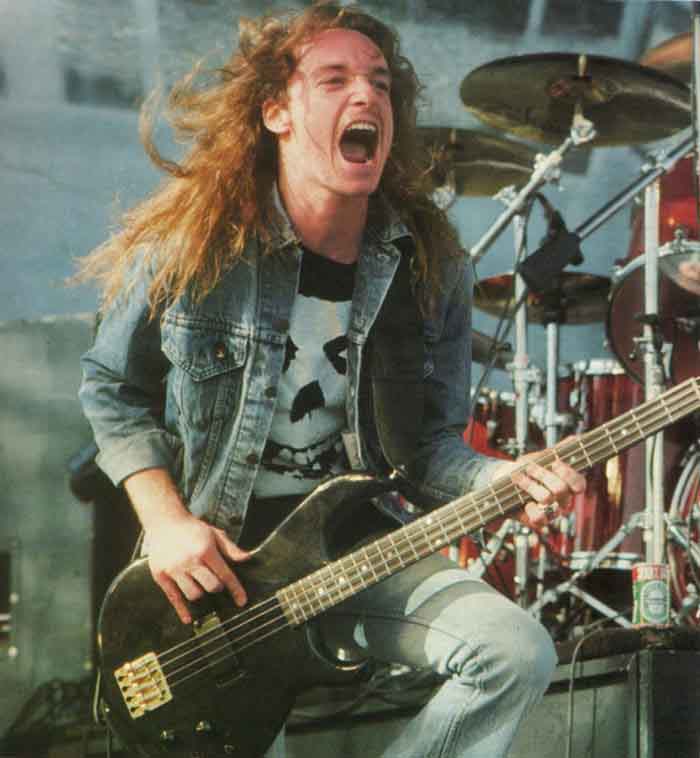
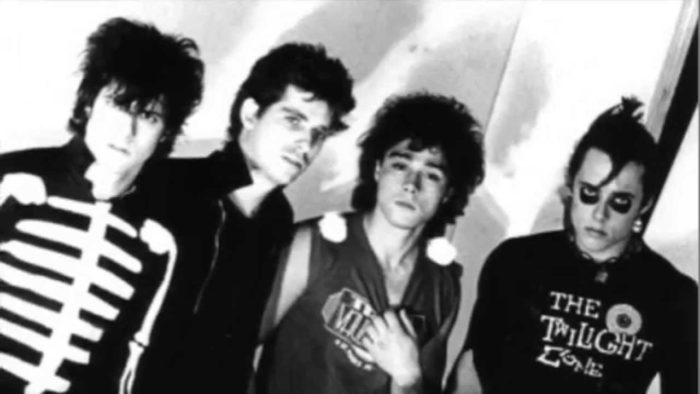
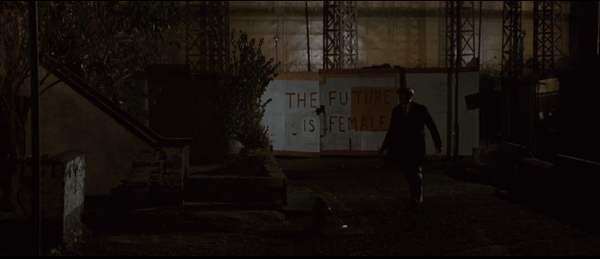
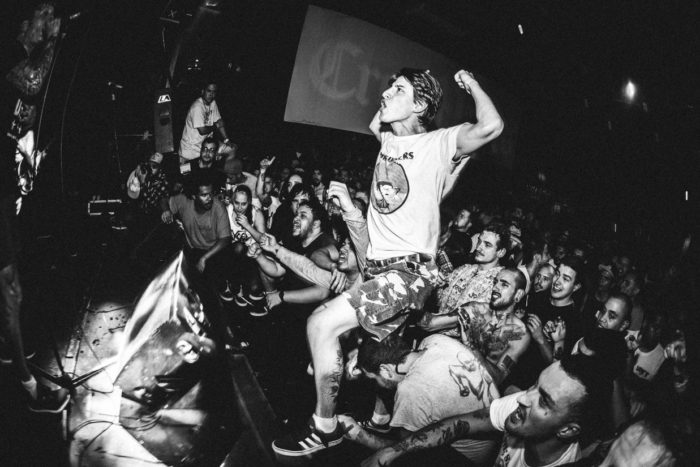
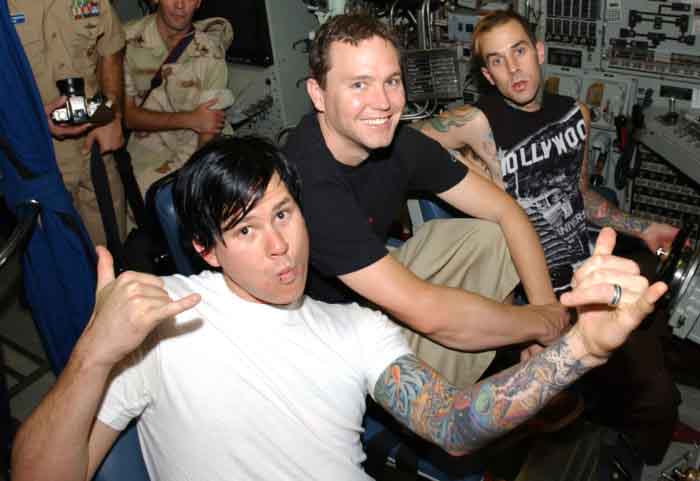
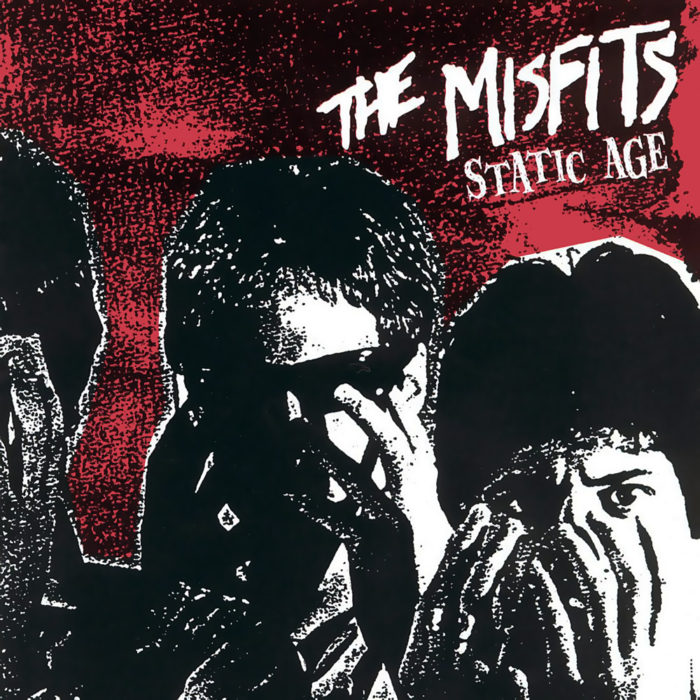
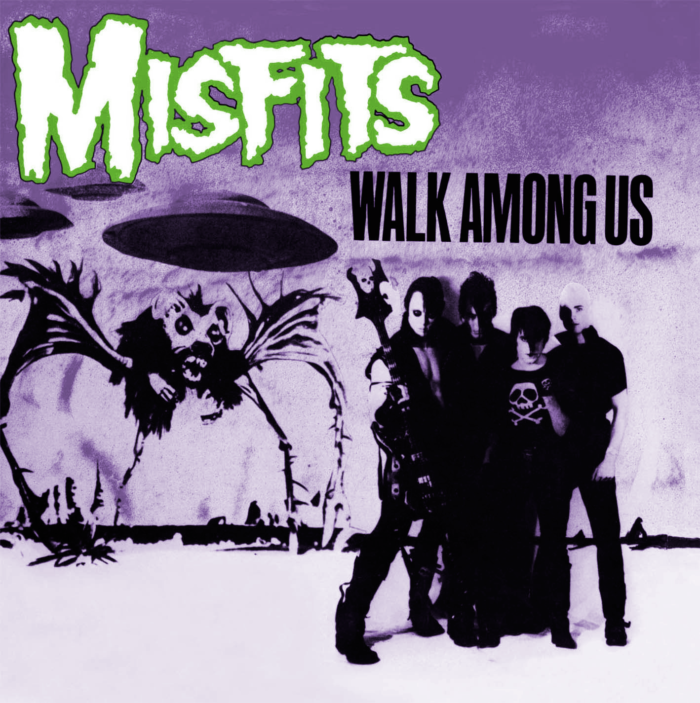
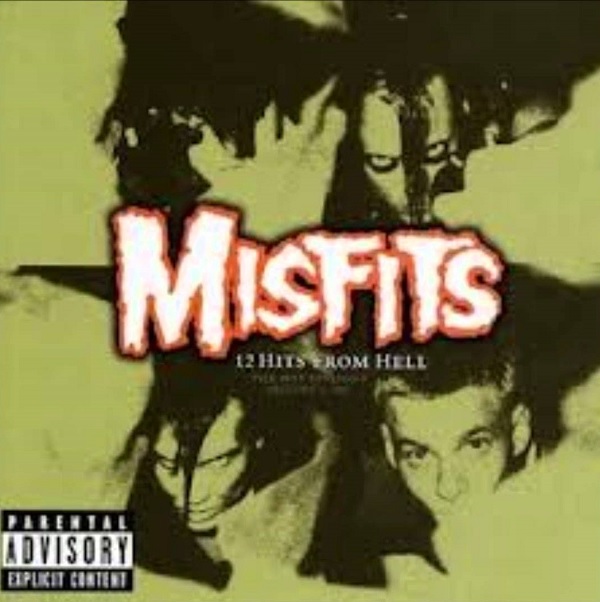
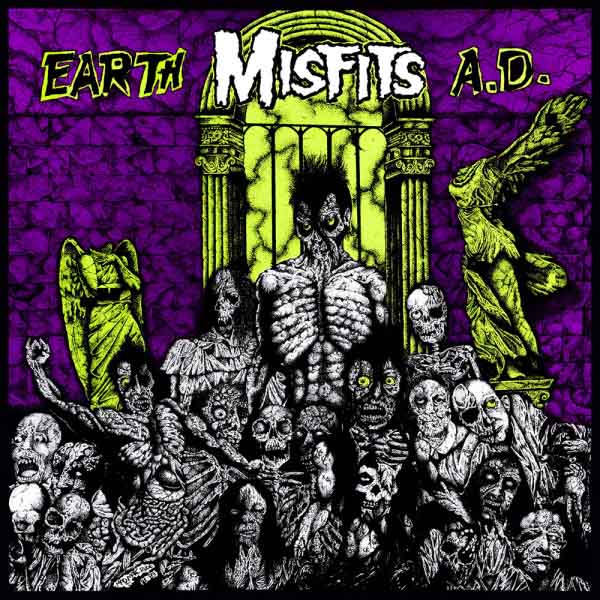
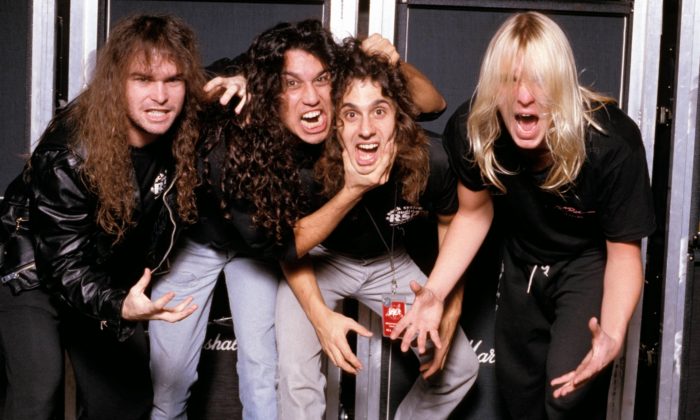


I think hybrid moments sums up their sound/aura rather well.
I don’t hear it that way. ‘Hybrid Moments’ strikes me as unusually melodious, with a lot of swing. Hell, I doubt if the album ‘Legacy of Brutality’ (from which that single comes) could even characterize their sound/aura.
Probably it’s just that they have several sounds/auras, from the doo-wop/fast R&B of ‘Walk Among Us’ to the D-beat brutalisms of ‘Earth A.D.’.
Interesting article. The guitar style on All Hell Breaks Loose has a lot in common with certain black metal recordings.
Like which?
We’re talking continuous downstrumming…
The one that’s initially on the left. That’s related to what people presumably mean when writing about ‘icy guitar sound’. A black metal band playing something like this would usually use two ‘major parts’, the Misfits seem to be using three. If you’re capable of sseing through the fact that this is musically about 500,000 times more advanced, harmonically slightly shifted and played with a slower tempo, you’ll also find that here
https://www.youtube.com/watch?v=EYIshmi45gk
and on numerous, much worse examples.
Hmph. I hear ‘All Hell Breaks Loose’ guitar as rather warm & rich with a hint of frizz on top. That Sammath, though, yes I’m hearing the ice.
Basically, I’m curious why ‘All Hell Breaks Loose’ is salient to you as related to black metal, any more than ‘Demonomania’, ‘Earth A.D.’, or any other D-beat track.
D-beat is a drum pattern (meanwhile, I even think I can recognize that thanks to Steven Cefala). I was referring to a particular style of rhythm guitar playing I concsiously noticed for the first time when listening to the Darkthtrone example in a David Rosales article of a while ago and also in the current, rather brilliantly lighted Dark Funeral album. That’s on All Hell Breaks Loose, too, and even mostly to the same effect. I have no words to describe that (I could try ‘distant and metallic’ but considering that the sound is creating by vibrating metal, this seems like nonsense to me) and don’t know how to play it (my dabbling in guitar playing was acoustic only), hence, the description I gave is the best I have.
I know, dude, that D-beat is a drum pattern. Just sayin’ that every Misfits song with a d-beat is no/more or less black metal than ‘All Hell Breaks Loose’. Right now, my rage is about to break loose unless I get a sign that you niggas GET THIS.
Has to be mentioned here again:
https://www.youtube.com/watch?v=eONQWH61SaM
There’s too much reverb in the vocals, guitar leads (I hate this term) are sadly missing, the sound is too bad (it’s difficult to hear what the drummer is actually playing) and it may be lack the compositional greatness of Transilvanian Hunger but – minus the studio gimmicks – this is exactly the kind of music Unholy Black Metal also is.
NB: I’m comparing this because that eases understanding.
Glorious German criticism of this (paraphrase): Muss so ein Geschrammel a la 1990 2016 noch produziert werden?
‘Geschrammel’ is a verb-turned-noun which refers primitive and badly played acoustic guitar chord accompaniment of some song, specifically someone holding a guitar and performing alternate up and down strokes in the same tempo and rare chord changes. Additionally, it’s about a recording which sounds bad because of carelessly employed, seriously subpar technology, yiedling a product whose quality is far below accepted standards for acceptable. With this as a background, the question could roughly be translated as
This may have been acceptable product quality in 1990 (they didn’t know how to do it any better) but in 2016, it’s just pathetic technique.
And this still captures only one aspect of the “For my refined tastes …” disdain the sentence expresses (I’m aware of the obvious “But that’s just what it is and …” attack suggesting itself here. And Black Witchery unquestioningly sucks). I’m somewhat sorry for the misplaced advocacy but it came from a feeling of elevated happiness after this and leaving people who (for some time at least) shouted “German! German! German!” at me with the expectance of provoking a reaction (matching similiar experiences in China).
Great article Johan. Time for me to dig into some Misfits albums that I never gave a second or third chance…
Also, lol @ you asking me for recommendations on hardcore punk: You have enough knowledge to school me. Your insights into the development, influence, and commercialization of punk are dead on, my friend. The Internet needed an article like this. The knobgobblers from punk sites need to get over here and get edumacated.
Thanks Corey. It was not my intention to come off as a smartass about the hardcore/punk recommendations. Except for the UK-scene and the biggest US-hardcore bands I’m quite ignorant about the genre at whole. Anyway, I’m pleased to hear that the intended message of the text came through.
#1 problem of the post-Freud society: Assuming the surely disgusting “psychological motiviations” (nobody really knows anything about, not even the speaker) of a speaker trump/ devalue the message. Hence, end of all meaningful communication (hyberbole).
I remember the Misfits as ‘new fad’ which made a Doors-like “comeback from the dead” sometime in the 1990s I never much cared about because I dislike Danzig’s voice and insofar I listen to punk (which I do a little), it’s of a less pretentious variant (https://www.youtube.com/watch?v=jvl-bxn0-GA, https://www.youtube.com/watch?v=ssAOPZYaedY). This article hasn’t changed my general opinion on the band (the proto-1950s punk is surely “very relaxed”, https://www.youtube.com/watch?v=4uBI8owlj4g&list=RD4uBI8owlj4g) and I think similarly about the other examples (I like the hardcore track, the 3rd, best). But this was an interesting read both as a history lesson and more general aesthetic discussion.
You liked the text even though you didn’t like the music, that’s good. The re-united Misfits of the 1990s was a affair.
What do you find pretentious about them? The music, lyrical imagery, perhaps Glenn himself…?
In my opinion, Danzig is pretty much a definition of »pretentious«, although my idea of that is a less negative than what I dictionary definition I found (http://www.oxfordlearnersdictionaries.com/definition/english/pretentious?q=pretentious) suggests: This is all “Ladies and gentleman, please be seated and let the Glenn Danzig band [insert name du jour] entertain you with its circus of the macabre”. This is most easily visible in the oldest track with its relaxed, sort-of rockabilly. There was already punk in the 1950s and the Jim Jones Revue is a good, somewhat current example of that: Rock’n’roll is great. But it needs to be faster, louder and more distorted! And by the way, where’s my leather jacket? Entirely intellectual music about central topics of human existence such as sex and violence. The Misfits openly address an intellectual audience (at least, that’s my idea of it) and this makes them ‘pretentious’ from a punk perspective (see also other reply).
Dayglo Abortions are cool man, but, less pretentious than Misfits?! Whaaaaa? Maybe you’re mistaking self-conscious campiness for pretentiousness? Because they are one of the least high-brow bands ever to come out of punk. Though I am with you on Glenn’s singing; it’s a bit grating.
I get your point. But music is always about ‘pretending to be something’, IOW, fiction targetted at an audience. I know little about “Glenn Danzig music” beyond what was in the text and ‘the hits’. I do know something about Dayglo Abortions (1st album only, 2nd is seriously “overdoing it”) as that’s something I’ve been keeping close to myself ever since I managed to buy a copy (from another guy in the same secondary school who didn’t like it). If Danzig impersonates “a child molestor/ murderer” that’s a theatrical performance and everybody is expected to know that it’s supposed to be one. In contrast to this I’m proud to be a Canadian/ Pass me another welfare check/ I’m proud to be a Canadian/ Hold my seat while I go out cash it/ I’m proud to be a Canadian/ Pass me another Escimo/ I’m proud to be a Canadian/ Hold my seat while I fuck her up the asshole (https://www.youtube.com/watch?v=AAbisg02JD4) is a seriously antisocial statement: Lower class white jerk living on patriotism, welfare and racist rape phantasies. Whether or not this a critical picture instead of just an accurate one is something the listener has to decide.
Or take another example (I can quote this out of my head as I’ve never forgotten it since I read it first in 1988 or so): Flesh and blood and splatter guts/ Dripping brains and radiation/ Everybody’s mutilated/ Screaming missiles, burning babies … This is just a bedtime story help you through the night/ Because when you wake up tomorrow morning, you gonna have to fight! (https://www.youtube.com/watch?v=fHHuFXBVNco). My nightmares are a lot like this but they are (nice) bedtime stories compared to my daymares. Other tracks could have been transcribed straight from my brain, too, I used to be in Love or Scared of people, including the heavy user of hyberbole stylistic device. Some handle ‘classic’ punk topics, the prepubescent odd boy who doesn’t get along with his parent who has a younger sister who is everybody’s darling (I killed mommy</em). And Danzig never recorded a timeless, philosophical classic like
https://www.youtube.com/watch?v=CX4Hd5UI7nM
Forgive me if I’m oversimplifying but I’m just reiterating what you said as best I can. We agree that all music is “pretending to be something that it is not” to some extent, but I want to know if the degree to which the music pretends matters.
Do you think that music about fictional topics is somehow lesser than music about real-life circumstances that the songwriter has experienced firsthand? If so then I would remind you that a lot of the human subconscious is only activated by what are basically myths at this point, regardless of whether they occurred in the past or ever will occur in the future.
For example, nobody recalls the planet being flooded, but a few historic myths suggest that it has happened. More importantly, we can imagine it happening without having experienced it firsthand. In the same way, I can listen to gangster rap and, even without having firsthand experience with the subject, I can still “feel” with my imagination the circumstances presented by the rapper, and at that point why does it matter if what he’s talking about really happened or not? It’s a given that the rapper’s experience is not my own anyway, since we are two different people existing in different places and times. I could even incorrectly assume that it his accounts are fictional, and still feel moved by the music.
We don’t need to examine the subjects in songs from a forensic perspective to understand what is meant by them. Overliteralizing lyrics may hinder understanding. I just made up that word, by the way, and (I’ll be that) you have no prior experience with it, but you can tell what it means.
I probably shouldn’t have used »pretentious« as that seems to have strongly negative connotations I didn’t mean to express. The Inferno track is also probably a more accessible example. That was born out of a punk jam session in some cellar when someone who was “in a real band” (the bass player) met a couple of guys who’d like to play in one (that’s from the liner notes. I was 9 or 10 at that time). That’s really nothing special, just someone’s frustration about an encounter with a certain girl (who probably boredly played with him for a fairly short time) turned into ‘sour grapes’ lyrics. I’m thankfully well past the state where I would let this happen again but I could immediately supply a name here. In contrast to this, Danzig (in any incarnation) is well done entertainment. I can look at it. I’m entertained well while doing so. I can as well just look elsewhere, it doesn’t really matter to me.
More metal example: The Darkthrone Decline and Fall of Norwegian Black Metal triology (I’m meanwhile somewhat resolved to buy Under A Funeral Moon should I see it somewhere). The titles alone are already magic: A Blaze In The Northern Sky, Under A Funeral Moon, Transilvanian Hunger.
Rainier, you seem baked.
And you seem hexasyllabical.
That’s an admission to being baked if I ever heard one.
That’s an attribute of the person who wrote this text (uses a six syllable pen name). It’s not particularly interesting. But it’s at least true.
And I have no idea what “you seem baked” means.
‘baked’ means ‘very high on cannabis’. You seemed to be that.
This is very interesting.
I didn’t grow up with any of this, so its creation is history, legend, and myth to me.
Of course I can listen to the music itself, that is eternal, but the story of its creation, I did not experience.
So thank you for sharing historical knowledge.
Great article. Thanks for the link!
Much 8f what you say about punk can be said of the authenticity and decay of any art or human activity in general. You’ve also taught us much about particulars here. Thank you.
Excellent article! This is the kind of stuff that DMU needs more of, it’s the sort of analysis that made this website valuable and different in the past.
This takes me back. The Misfits’ music represents many different things to me, but primarily I think it best symbolizes the end of my adolescence. I didn’t really get into any sort of metal music until years after high school, and even then the first metal album I truly appreciated was the Danzig debut album. Prior to that I was a punk wandering the school halls with my mohawk in a bootleg Crimson Ghost shirt. Eventually I moved on to Slayer because I had read that there were similarities in Slayer’s style with hardcore punk, but it would be a while before I got into other speed metal and then later death metal. At the time though, the morbid imagery and subject matter of the songs fit me like a glove. I realized later that despite all of the obvious aesthetic reasons, the juxtaposition of those “50s progressions” and other pop sensibilities with lyrics based around themes of horror that Johan touches on were the main reason that the Misfits held such an immense appeal with me.
Good article, agree with everything said here, but never heard anything in CARCASS’ music as you imply (” Second World War era popular music”).
As a side-note, there’s some post-Misfits tracks by SAMHAIN that I thought were just as great.
https://en.wikipedia.org/wiki/Samhain_%28band%29
“Let the Day Begin” – https://www.youtube.com/watch?v=fPUYb0Y6cvU
“In My Grip” – https://youtu.be/duGarBRqjUU
Some of the leads in RoP have this sort of twisted rock n’ roll sound that are like warped versions of hair band guitar solos.
Fermenting Innards, Foeticide, Slash Dementia, etc. kind of has a big band feel to it in the melodies. Almost danceable
Awesome Swedish death metal from a band that never made it big. This is a true lost gem.
Mega Slaughter – Calls from the Beyond 1991
https://www.youtube.com/watch?v=Yizhs8TGPqA
Can you make any meaningful comment about Moondark ‘The Shadowpath’?
You, or any other niggas on here?
The positive response so far is very much appreciated.
And as canadaspaceman mentioned, SAMHAIN is worth a listen as well. The songs he suggested and the album they’re from makes for a good introduction.
Fantastic article about one of my favourite bands. About time that they were acknowledged around here.
Pretty sure everyone only listens to The Misfits because of their quirky hairstyle and quasi-psychobilly songs.
You need a really good system to hear the hair though
“Pretty much everybody only listens to [insert band here] because of the songs”
Thanks genius!
I’m so fvcking confused about the chronology of their discography. The shit was recorded in linear time-frames, yet released in a jumbled, non-chronological order. To complicate things, half my niggas’ tracks came to most of us via Collection I & Collection II. So you’ll hear the 1st LP, then 2nd, then Collection I, which actually exposes you to shit preceding the Misfits’ own ‘progression’/development. It’s pretty twisted!
It is indeed a frustrating discography… If you’re up to it, check out misfitscentral.com – there you’ll find “complete” coverage of their releases as well as recording sessions. It’s a gold-mine for every aspiring Misfits-autist!
Then again, there are alot of different mixes of the same songs, even from the same recording sessions. It’s a jungle. The Collection albums gives a good overview of their periods, and especially Collection I contains what I would deem the ultimate version of some of their songs. Collection II is a bit messy and less representative since Danzig decided to re-mix and even re-record/overdub the old material.
…but don’t lose perspective: listening to this band is a waste of time compared to most of the DLA archive bands. For punk, good albums are Dealing With It and Age Of Quarrel which seem more like complete works than the random jingle compilations from The Misfits (even Green Hell seems like party fodder to me). I also think albums like Reek of Putrefaction and A Blaze in the Northern Sky had more going for them musically than “attitude”, rock n roll lineage, etc. The pitfall of this band is the same as most bad (or earliest to have sold out) black metal: it’s grown men in makeup playing mediocre music for a “select audience” – nothing more.
Since I was the person who mentioned this here: Unfathomable Ruination is high-speed technical deathcore.
Expanding on this a little: This is a London-based so-called ‘technical brutal deat metal band’ whose 2nd album was released end of last month. I preordered this from the label a month earlier because the published advance track sounded ok despite this brought to price to a whopping £25, with the shipping cost (USA to UK) being 1.5 times the cost of the album itself and because I’m living in England (for now at least — HM government is still in the process of making up its mind re: should people who came here because we told them they had a right to do be allowed to stay despite we didn’t really mean it) and I should thus support English bands.
I ended up listening to this exactly three times. The first two times, I noted the first two tracks were “rather Abnormality than Wormed” (ie, more technical as a style of its own instead of employing technicality to express something — I do like Abnormality very much, by the way) and then, my mind somehow lost track of the music. The first time, I got a somewhat melodramatically feeling depression. The second time, I became very jumpy and angry. Upon the third attempt, I noted that one track seemed be nothing but breakdowns for the 2nd half and the next track continued with nothing but breakdowns for minutes on end (as it seemed to me — I didn’t check the real running time). When I reached the point where my ears were simply unwilling to digest another start – stop transition, I removed the CD from the CD player and replaced it with something nice instead (Satanize followed by Live Burial) which immediately rescued the 3rd evening.
NB: I’ve read that ‘breakdowns’ are a central stylistic element of something called ‘deathcore’. I wouldn’t talk anyone down for being attracted by this but I hate them.
Interesting and thought-provoking article about a band that takes me back to my teenage years. Thanks heaps for taking the time to write it and delivering it with sincerity. I’d be interested to know where the author thinks early Nomeansno would fit in (or not?) with the 3 attributes of late 70s hardcore punk?
IIRC, they play some sort of jazz-influenced hc (jazzcore, what the…?). Can’t say much more at this moment, I’ll have to get back to you on this. Thanks for the recommendation though.